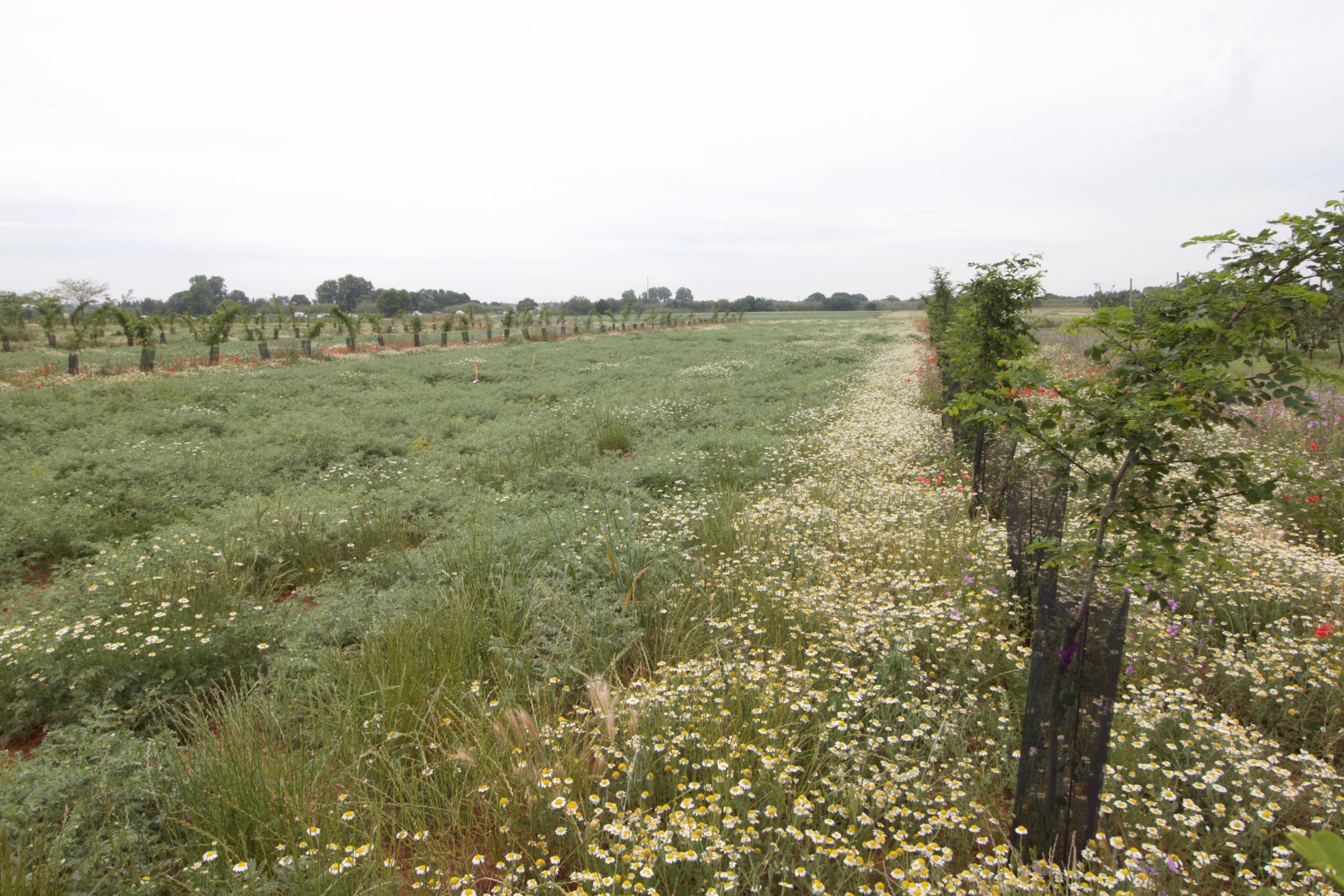
Black Locust
Fast growing rot-resistant timber for the Eastern U.S.
Why Grow Black Locust?
Black locust is a fast-growing, high-value hardwood. The lumber is 30% stronger than white oak, and lasts for 30+ years in contact with the soil. Black locust lumber prices surpasses black walnut prices, and the tree reaches sawlog size in one-third of the time. Black locust is at the forefront of market-driven climate solutions in cold, humid climates.
Native timber
Black locust is native to Appalachia, the Midwest and Eastern U.S. It grows best in well-drained, calcium-rich soils, and needs ample precipitation during the growing season. Black locust has a long history of being planted across the continent by native tribes and early settlers.
Rot-resistant lumber grown in the U.S.
Black locust lumber can be used for decking, docks, fence posts, garden beds, and playgrounds. Due to its rot-resistance, it is often considered a viable substitute for metal and stone: truck decking, driveways, and marine applications are common.
Market gap in the U.S.
Though the tree is common, the U.S. market cap for black locust is relatively small: wild-grown trees often yield curved sawlogs, which do not yield good milled lumber. Straight-growing genetics and proper management are a game-changer. Teak a common, tropical, rot-resistant hardwood is a market comp to black locust. Annual teak imports to the U.S. total about 45,000 metric tons: 20 million board feet, and a $120-240 million market value.
Plant once, harvest multiple times
In contrast with pine, black locust grows back after harvest, negating the need for re-planting. This means perpetual yields, ground-cover, and forest. Pruning is essential for high-quality wood production.
Selecting Genetics
Propagate and Silvanus Forestry have partnered to scale black locust in the United States. In November 2023, Propagate secured an exclusive license to the Turbo Obelisk variety group, a line of elite Robinia genetics, to serve as a catalyst for black locust agroforestry in the U.S.
Turbo Obelisk™
In partnership with
Why Turbo Obelisk™️
Straight timber growth & milling with ease
The Turbo Obelisk exhibits a straight growth form and an exceptional growth rate as compared to conservation genetics which have a high variability of tree form. This makes milling much easier and decreases the percentage of log that ends up as milling waste.
Black Locust Turbo Obelisk™
Conservation Grade Seedlings
Superior growth rate & wood quality
The Turbo Obelisk has a superior growth rate compared to conservation genetics, which still grow fast for a temperate hardwood. Faster growth allows for sub-20 year harvest periods and can help decrease risk of locust borer due to higher tree vigor.
Turbo Obelisk™ (15 Year Old)
Conservation Grade (30 Year Old)
Use Cases for Black Locust
Black locust is fast growing, fixes Nitrogen, and supports pollinators with its blooms. These characteristics make it ideal for several types of agroforestry systems.
Silvopasture
Windbreaks
Riparian Buffers

Technical Guides
An introduction to pruning black locust for improved productivity, integrating lessons learned from black locust cultivation abroad.
Black Locust Pruning

Related Resources
Black Locust: What You Need to Know
Hungary has produced excellent results with black locust, both with seedlings and clones. Clones yield double the return on investment (IRR), compared to seedlings, with best case scenarios of 16% and 8% respectively. Growing black locust is more nuanced than growing softwoods destined for framing lumber: black locust wood prices are up to six times greater than pine, and thus management interventions can carry six times the weight.
The Market Opportunities for Black Locust
Black locust can be attractive to those who own, operate or invest in farmland. Timber generally has a high cash yield and is low risk. For this species in particular, we can expect a best-case 30 year internal rate of return (IRR) of 16%. We’ll look at the market opportunities for timber production, elaborate on the co-benefits these trees bring to farmland, and run through how to get started with black locust.
Silvopasture Creates Profitable and Resilient Food Systems
Livestock producers face increasing threats to farm viability from thin profit margins to extreme weather, and shifting consumer demand. Silvopasture, a form of agroforestry, is one tool in our regenerative toolkit that provides a host of benefits to producers, consumers and the planet, simultaneously.



















